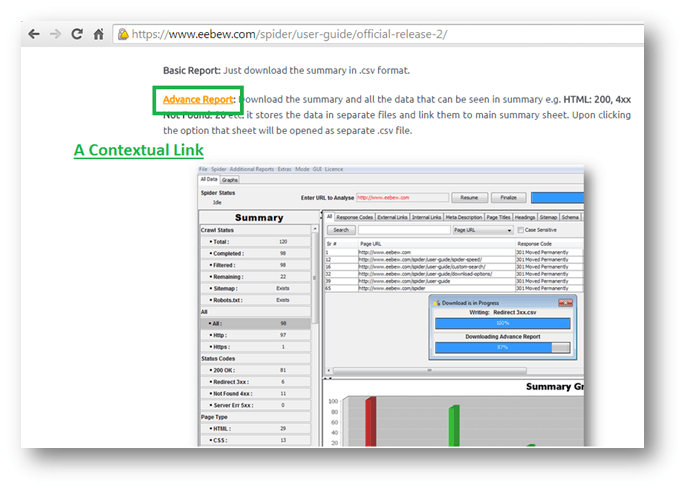On-page basic elements are those elements which are of great importance for a webpage, from search engines’ perspectives as well as from users’ standpoints. These elements primarily set the background of a webpage. Search engines, when visiting any webpage, take keywords and phrases from these basic elements and set them as primary keywords for that page. Whenever these keywords will be searched by user, there will be chances of that webpage of showing up in search results (if properly optimized). Let us have a look.
Title Tag
First and foremost in this list is the title tag. This can be seen on any websites’ top section. See the image below.
Title sets the initial meaning of webpage for search engines. So, optimal targeting of keywords in it is essential.
Meta Description
Meta description cannot be seen at front end of webpage. This is being embedded in source code and can be accessed from there. Search engines like Google take meta description and show it in search results when displaying a webpage.
Heading Tags
Heading tags; h1, h2, h3, h4, h5 and h6, are important for relevant keywords targeting and improving their ranks in SERPs. In all six tags h1 possess the highest precedence and respectively the others.
[the_ad id=”6392″]
Text Content
The foremost webpage element and ranking factor for search engines; text content is the section where a webpage is being defined. This section covers the details of what that webpage is about. For search engines this chunk is, in fact, the only thing from where they decide the relevancy parameters of a webpage. So, duplication in this section can be the most harmful thing in complete SEO. Beware of it!
Internal Navigations
This element gives the ease; to the user to navigate and explore other sections on website and to search engines to develop the relevancy of different webpages to transfer internal worth. Below are the classifications.
Header Links
Mostly named as menu links, header links are the primary navigation on a webpage. This section links to the most important webpages on a website. Search engines, for any website, consider links in this section as one link e.g. if a webpage is being linked hundreds time in menu from different webpages, Google will still consider it as one link on website. So; the importance of header links, from search engines’ perspectives, contains less importance than other navigational schemes.
Sidebar Links
Sidebar links appear on left and/or right side of a webpage. They also transfer page worth to linked webpages if optimally targeted. They are at second position in rank by search engines in internal links.
Contextual Links
[the_ad id=”6394″]
The top most navigational scheme; contextual links are at the uppermost priority in internal linking scheme. They transfer the highest amount of page worth to the linked webpage for keyword used as anchor text. The reason is; content on a webpage is the only element from where search engines decide the level of uniqueness of that webpage. See the image below that how contextual links look like.
Footer Links
Footer links are least in importance in internal navigations. They mostly contain links to non-landing pages like privacy policy, terms and conditions, company address etc. These can be found at the end of webpage.
Keywords Targeting
In all above elements, if you observe, the only common thing was “Keywords”. So, keyword targeting is equally influential as text content for better SERPs because if keyword targeting is not absolute then even unique content is not going to help.
Previous Article
On Page Optimization
Articles that May Interest You |
|
|---|---|



